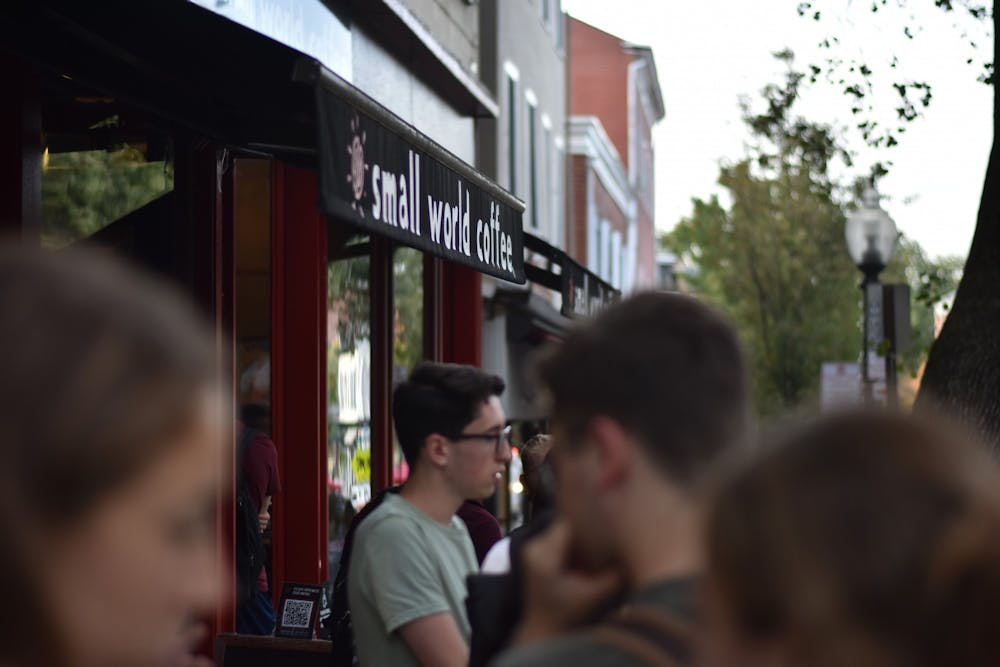Speaking to broad student use, 68 percent of students used all of their Dining Points, a part of the Pay with Points program that kicked off in Fall 2022.
Created in order to increase students’ exposure to Princeton’s businesses, the Pay with Points program is an initiative implemented by the current Undergraduate Student Government (USG) president Stephen Daniels ’24 in fall of 2022, at which point he led the initiative while serving as the USG community dining task force chair.
Each student with an unlimited meal plan, including all first-years and sophomores, was given $150 of credit per semester to use at participating locations. Points carry over from the fall to spring semesters, but not between academic years; points not used by the end of the spring semester will be forfeited.
With the $300 given to each eligible student, the total cost for the program is just shy of half a million dollars.
Pay with Points began with five participating off-campus vendors: Jammin’ Crêpes, Proof Pizzeria, Small World Coffee, Say Cheez Café, and The Bent Spoon; since then, the program has expanded to 16 off-campus locations — with plans to grow. (A list of all vendors can be found here.) With more than 15 participating vendors by the end of calendar year 2022, Emma Marshall, Manager of Campus Card Systems, shared with The Daily Princetonian that the team who put the Pay with Points system together has met their goal.
In the Oct. 9, 2022 USG Senate meeting, Marshall and Chris Lentz, the Director of Customer Experience and University Services, spoke about the state of the program thus far. When asked about selecting merchants to participate in the program, Lentz said, “we are keen to think about merchants who encourage a sense of community, so we’ve been trying to prioritize places that are not just grab-and-go per se, but encourage students to come together, dine together, because that’s really part of what the program is intended to do.”
Marshall told the ‘Prince’ that students spent $140,000 in points off-campus over the fall semester. 87 percent of this value was Dining Points, and the other 13 percent was from Paw Points — a program within Pay with Points that can be used at locations including the U-Store and Labyrinth Book Store.
Marshall shared further that for the month of September 2022, the first month of the program, the average amount of points spent by each student was $33, just below a quarter of the $150 given to each student per semester. Of students who have Dining Points, 81 percent used at least a dollar in that month, and the other 19 percent did not use any in September.
However, by the end of the semester, many students had — in Marshall’s words — “unsurprisingly” used most or all of their points. 68 percent of students who were given Dining Points had less than a dollar remaining in their balance, using the vast majority or all of their points. 31 percent of students used at least a portion of their points, and the remaining students — just under 2 percent — did not use any of their points.
For the month of September, the locations where students spent their Dining Points had a fairly even distribution. In terms of breakdown, 36 percent of points were used at the off-campus locations, 40 percent were used at Campus Dining locations, and 23 percent were used at on-campus locations not operated by Campus Dining, such as the U-Store and the Coffee Club.

Those trends remained the same throughout the semester. Of the $370,000 of Dining Points spent, 32 percent were used at the off-campus locations that are a part of the program, 39 percent of the funds were spent at Campus Dining locations, and the remaining 29 percent at on-campus locations not operated by Campus Dining.
Additionally, according to Lentz and Marshall, Pay with Points expenditures were roughly evenly split across vendors, which Lentz and Marshall said was their goal. Although they were unable to provide a specific breakdown of the amounts spent at each business, they said that they were happy with the distribution because it meant that they succeeded in selecting vendors that students wanted to patronize.
“We like to see points being used at a lot of different locations because then that tells us that we’re making good selections in terms of meeting the interest and the needs of a diverse group,” Lentz said during the meeting.
Lentz and Marshall also shared that they have received positive feedback from participating vendors. Kathy Klockenbrink, co-owner of Jammin’ Crêpes (one of the original restaurants under the Pay with Points Program), said that “the system is pretty seamless,” bringing “more kids across the street” from campus to Nassau and is a “nice effort to the University with the business community.”
“One of the unexpected things that came out of the program — one of the vendors has had more students apply for positions [jobs] than they’ve ever seen before,” Marshall noted. (This instance could not be definitively linked to Pay with Points.)
Other vendors who were not a part of the program in September expressed interest in the program, reaching out to USG with an interest in the Pay with Points system. Marshall said, “We’ve also had a lot of vendors reach out to us saying, ‘hey, we’ve had students asking — do we accept points yet?’”
New businesses are opening soon on Nassau Street, which may provide new potential opportunities for the expansion of the Pay with Points program.
Sabrina Effron is a first-year Data contributor from New York City, New York.
Elisabeth Ruschmann contributed reporting.
Please direct all corrections to corrections[at]dailyprincetonian.com.
Correction: A previous version of this piece credited Stephen Daniels ’24 as the founder of the Pay with Points program; it was in fact initiated by Bradley Phelps ’23.








